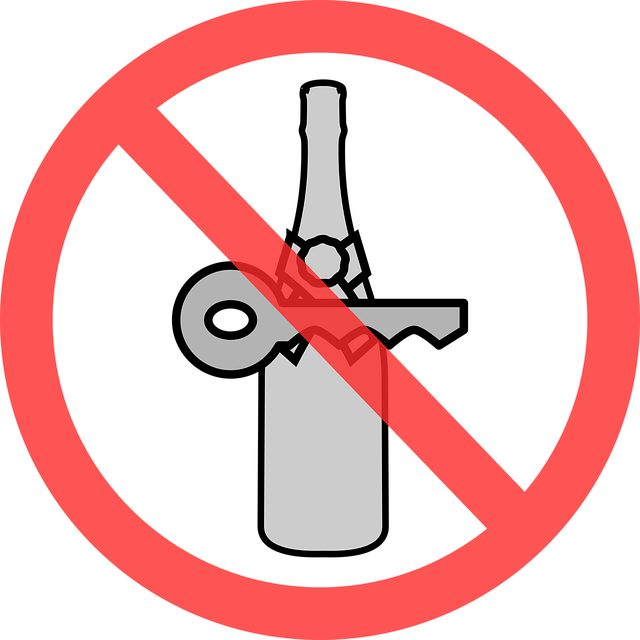In rural communities, understanding pedestrians' rights is vital for creating safer streets due to lower population densities and limited public transport. Empowered residents can advocate for infrastructure improvements like better lighting, speed limits, and crosswalks, especially in the context of Rural Community DUI Prevention efforts. Key strategies include robust DUI prevention programs, community education, stringent law enforcement, and investments in pedestrian-friendly infrastructure. Local governments play a crucial role in enforcing laws, conducting awareness campaigns, and improving street design to reduce accident risks. Community engagement through public meetings and neighborhood watch programs fosters collective responsibility for safer streets, encouraging active lifestyles and enhancing quality of life. Rural areas have successfully reduced DUI incidents through collaborative initiatives, providing valuable insights for urban areas seeking to adapt similar safe streets programs.
In rural communities, pedestrians’ rights and safe streets are paramount yet often overlooked. This article explores strategies for enhancing pedestrian safety, focusing on a rural community perspective. We delve into the unique challenges faced, such as the impact of drunk driving (DUI), and highlight effective solutions. From local government initiatives to community engagement, these rural areas are leading the way in creating walkable, safe environments. By understanding residents’ rights and implementing targeted strategies, rural communities can significantly reduce DUI incidents and foster a culture of pedestrian safety.
- Understanding Pedestrians' Rights: A Rural Community Perspective
- The Impact of DUI (Drunk Driving Under Influence) in Rural Areas
- Creating Safe Streets: Strategies for Rural Communities
- Enhancing Pedestrian Safety: Role of Local Governments
- Community Engagement: Key to Preventing DUI and Promoting Walkability
- Success Stories: Rural Communities Leading the Way in Safe Street Initiatives
Understanding Pedestrians' Rights: A Rural Community Perspective

In rural communities, understanding pedestrians’ rights is essential for ensuring safe streets. Pedestrians in these areas often face unique challenges distinct from those in urban settings. For instance, lower population densities can lead to less stringent traffic regulations and reduced enforcement, potentially increasing risks for walkers. Moreover, factors like limited public transportation and longer distances between destinations make walking a more viable and necessary mode of transportation.
Knowing their rights empowers rural pedestrians to advocate for safer streets. This includes pushing for better lighting, speed limits, and crosswalk markings. In light of Rural Community DUI Prevention efforts, promoting pedestrian safety is paramount. By educating residents about their rights and working collaboratively with local authorities, these communities can foster an environment where everyone—from drivers to walkers—feels secure and respected on the roads.
The Impact of DUI (Drunk Driving Under Influence) in Rural Areas

In rural areas, the impact of Drunk Driving Under Influence (DUI) is particularly severe and has far-reaching consequences for the entire community. With lower population densities, emergency services often face longer response times, increasing the risk and severity of outcomes for victims involved in DUI accidents. These incidents can disrupt the fragile social fabric of close-knit rural communities, leaving lasting trauma and financial burdens.
Rural Community DUI Prevention requires a multi-faceted approach. Educating residents about the dangers of impaired driving and implementing stricter enforcement measures are essential strategies. Enhancing local infrastructure, such as improving road lighting and signage, can also deter drunk drivers and create safer streets. Additionally, promoting public transportation alternatives and fostering community awareness campaigns can significantly contribute to reducing rural area DUI incidents, ensuring a more secure environment for pedestrians and residents alike.
Creating Safe Streets: Strategies for Rural Communities

In rural communities, creating safe streets requires a multifaceted approach tailored to address unique challenges. With lower population densities and often limited resources, ensuring pedestrian safety demands innovative strategies that go beyond traditional urban solutions. One key strategy is implementing robust DUI (Driving Under the Influence) prevention programs. Given the reduced police presence in rural areas, these initiatives empower residents to take ownership of their safety by promoting responsible drinking and reporting suspicious activities.
Community engagement is pivotal in achieving this. By fostering partnerships between local businesses, schools, and law enforcement agencies, rural communities can develop effective pedestrian safety measures. This includes well-designed crosswalks, improved street lighting, and clear signage to guide pedestrians. Additionally, encouraging the use of alternative transportation options, like bike lanes or public transit, reduces traffic congestion and makes roads safer for those choosing to walk.
Enhancing Pedestrian Safety: Role of Local Governments

Local governments play a pivotal role in enhancing pedestrian safety, especially in rural communities. One critical aspect is implementing and enforcing strict drunk driving (DUI) prevention measures. In many rural areas, where public transportation access might be limited, pedestrians often rely on walking as their primary means of mobility. Therefore, reducing DUI incidents is essential to ensure the safety of these vulnerable road users. Local authorities can achieve this through stringent DUI laws, regular awareness campaigns, and increased police patrols in residential neighborhoods and pedestrian-heavy zones.
Moreover, local governments should invest in infrastructure that prioritizes pedestrians. This includes well-designed sidewalks, crosswalks, and traffic signals that accommodate safe crossing. By creating physical barriers between vehicles and pedestrians, such as elevated walkways or dedicated pedestrian lanes, authorities can significantly reduce the risk of accidents. These measures not only protect pedestrians but also encourage an active lifestyle, fostering healthier rural communities.
Community Engagement: Key to Preventing DUI and Promoting Walkability

In rural communities, where car dependency is often high, community engagement plays a pivotal role in preventing Rural Community DUI (Drunk Driving Under Influence) and promoting walkability. By fostering a sense of collective responsibility, residents can actively participate in creating safer streets for everyone, including pedestrians. Public meetings, neighborhood watch programs, and local initiatives focused on raising awareness about the dangers of impaired driving can significantly reduce such incidents. Encouraging open dialogue allows community members to identify problem areas and propose solutions tailored to their unique needs.
Engaging the community also means empowering residents with knowledge about walkability. Educating people about the benefits of walking for both physical and mental health, and providing resources on creating pedestrian-friendly environments, can lead to lasting behavioral changes. Together, these efforts can transform rural communities into places where pedestrians feel secure and encouraged to navigate without the fear of drunk drivers, ultimately enhancing the overall quality of life.
Success Stories: Rural Communities Leading the Way in Safe Street Initiatives

In recent years, rural communities have emerged as leaders in advocating for safe streets and prioritizing pedestrians’ rights. These areas, often characterized by lower population densities and unique challenges, have implemented innovative initiatives to enhance road safety. One notable success story is the reduction of DUI (Drunk Driving Under Influence) incidents through community-driven programs. By organizing educational campaigns, setting up sobriety checkpoints, and promoting alternative transportation options, rural towns have significantly lowered the risk of accidents caused by impaired driving.
The approach taken by these communities emphasizes collaboration between local authorities, residents, and nearby businesses. They’ve successfully created a sense of shared responsibility, resulting in more vigilant watchfulness over potential hazards. This proactive mindset has led to the installation of better street lighting, speed bumps, and crosswalks, making rural roads safer for pedestrians. Such achievements not only serve as inspiration but also offer valuable insights that urban areas can adapt and replicate for their own safe streets initiatives.
In conclusion, ensuring safe streets for pedestrians is a multifaceted challenge for rural communities. By understanding and asserting their rights, implementing strategic initiatives, enhancing local governance, fostering community engagement, and learning from successful examples, these communities can significantly reduce DUI incidents and promote walkability. Embracing these approaches can lead to safer, more vibrant rural environments where pedestrians thrive, contributing to overall well-being and quality of life. Rural community DUI prevention efforts, when combined with a focus on pedestrian safety, hold the promise of transforming rural landscapes into model examples of inclusive, secure, and inviting public spaces.






